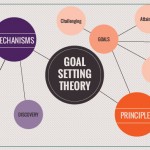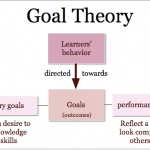How To Plan, Develop, and Live a Goal-driven Life

Image Source: Towfiqu barbhuiya | Pexels
‘The trouble with not having a goal is that you can spend your life running up and down the field and never score.” –Bill Copeland
Setting goals is the first step you can take if you want to live a life with a direction and a sense of purpose. Goals refer to the desired results you or a group of people plan to achieve.
According to Locke and Latham, who have incorporated nearly 400 studies about the concept of a well-developed goal-setting theory (1990), goals motivate people to build strategies that will enable them to perform at the level required by the goals. Accomplishing goals leads to a higher level of satisfaction and further motivation. However, unaccomplished goals could lead to frustration and lower motivational levels.
The goal-setting theory shows that goals are more effective for most people when they include a deadline for completion. Deadlines serve as a time-control mechanism and increase the motivational impact of goals.
Consequently, being aware that a goal has a timeframe would encourage a person to invest more effort in achieving it. In contrast, if plenty of time remains for attaining a goal, a person is likely to slow down when it comes to filling the available time.
Designing The Life You Want
It is not easy to design your life without setting goals, and the first step is to establish a personal vision statement. Ask yourself: “In five years from today, where do I want to be?”
To answer the question, you have to identify your strengths, list your skills, and make a positive declaration of your abilities.
Although strengths reflect your value and make working towards a long-term goal easier, identifying your weaknesses is equally important. Weaknesses help you evaluate your abilities and limitations. You can use it not to shrink your goals but to help you make improvements.
Break your goals into smaller goals you can accomplish daily. For example, to finish 10 books a year, you need to break this goal into small habits, like reading a number of pages each day at a specific time or finishing one book per month.
You can also categorize your goals:
- Academic goals: What knowledge and qualifications do you want to achieve?
- Career goals: What do you plan for your career, and where do you want your career to take you?
- Financial goals: What do you aim to gain at a given point in your life?
- Creative goals: What progress do you want to achieve creatively?
- Physical goals: What activities do you want to develop your skills in?
SMART personal goals
An effective way to make goals more powerful is to make them SMART goals. A SMART goal is easier to achieve because it is Specific, Measurable, Attainable, Relevant, and Time-bound.
For example, instead of saying that your goal is “to travel around the world,” which is a long-term goal and seems hard to achieve in a small period of time, you can say that you want “to travel to 10 countries around the world by September 2025.”
Don’t forget to enjoy the journey toward reaching the goal and take your time to savor having the goal done. If the goal is significant, reward yourself for achieving it, and it can encourage you to set more goals in the future, stay motivated, and build your self-confidence.
Setting personal goals can be quite challenging. If you are interested to know more about what you should consider when establishing personal goals, read this article about setting personal goals.

Tags: goal-driven life, goals





